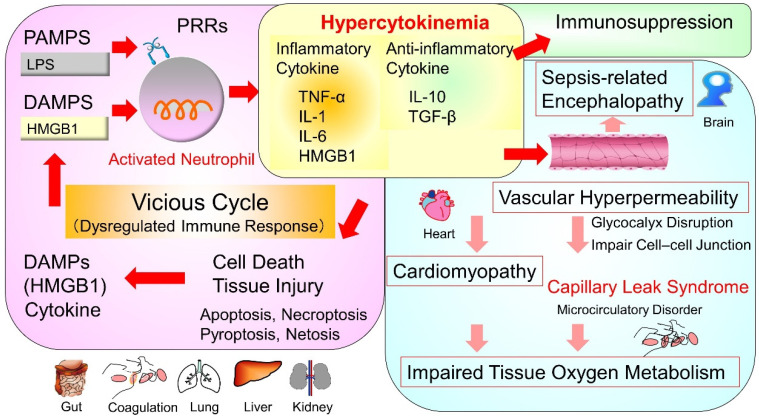Figure 3.
Pathophysiology of sepsis-pathological evolution from hypercytokinemia. Hypercytokinemia is widely accepted as the mainstay of the pathophysiology of sepsis. And subsequent biological reactions are thought to evolve into molecular cell-level disorders, such as cell death, microcirculatory disturbances, and mitochondrial dysfunction, as well as organ-level disorders, such as septic cardiac dysfunction and sepsis-related encephalopathy. The increased permeability of the vascular endothelium and the resulting interstitial edema and impaired tissue oxygen metabolism are of particular importance in the pathogenesis of sepsis. PAMPs, pathogen-associated molecular patterns; DAMPs, damage-associated molecular patterns; PRRs, pattern-recognition receptors; LPS, lipopolysaccharide; HMGB1, high mobility group box l protein; TNF-α, tumor necrosis factor-α; IL, interleukin; TGF-β, transforming growth factor-β.

